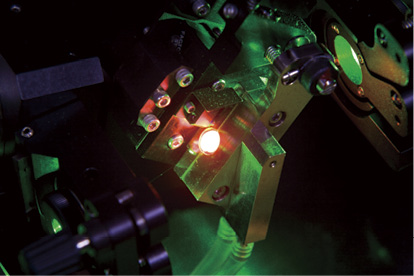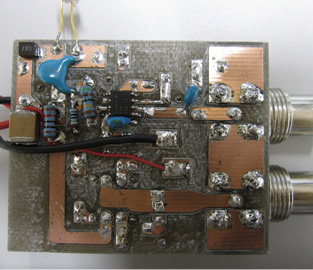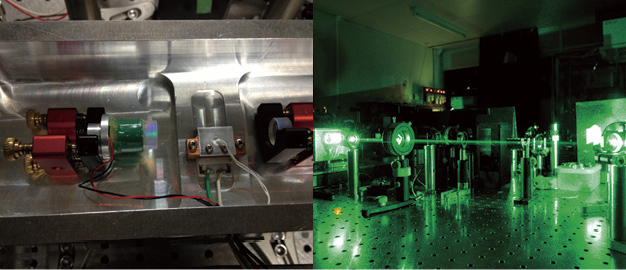
As of August, 2015
| Faculty/Department | Department of Engineering Science Graduate School of Informatics and Engineering | 
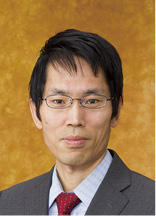
|
| Members | Masayoshi WATANABE, Professor Yun Zhang, Associate professor |
|
| Affiliations | M. Watanabe: Japan Society of Applied Physics, Laser Society of Japan, Spectroscopical Society of Japan Y. Zhang: American Physical Society | |
| Website | http://www.wzlab1.es.uec.ac.jp/ | |
Vacuum ultraviolet (VUV), laser engineering, coherent optical control, quantum optics, laser spectroscopy, quantum electronics
acuum ultraviolet (VUV), laser engineering, coherent optical control, quantum optics, laser spectroscopy, quantum electronics.
Our research targets laser sources in the short-wavelength region corresponding to vacuum ultraviolet light (VUV) outside the ultraviolet region of the spectrum, with the goal of creating powerful, high-quality light sources. Additionally, to create a coherent light source in the short-wavelength region, we plan to take full advantage of our technological background and the latest technologies to generate higher quality light. Numerous examples of applications for VUV light sources encompass a wide range of fields, including communications (writing/reading data), energy applications (e.g., laser-beam machining), and various fields of measurement. The most obvious example is IC fabrication technology. The fine structures observed inside an IC are created by photolithography, a process in which a high-quality VUV light source is essential.
Compact and easy to handle, semiconductor lasers offer wide frequency selection and hold out promise as a new frequency-specific light source. Nevertheless, due to high noise levels, they fall short with respect to frequency stability compared to other laser sources that use the same stabilization method. We have successfully reduced this noise by feeding back part of the oscillating light into the filter cavity to achieve both optical and feedback effects. Additionally, we are performing frequency stabilization experiments based on the absorption line of iodine molecule as a reference point, performing wavelength conversions of low-noise light by second harmonic generation (SHG: Second Harmonic Generation).
Most observers anticipate that a stabilized laser will become a secondary standard for measurements of length.
Using laser optical technologies, we explore the fascinating features of quantum physics and hope to pioneer new research fields in quantum information processing. A principle of quantum physics states that the act of measurement always affects the measurement target. This principle can be strategically applied to create eavesdropping-proof communications or quantum-encrypted communications.
Quantum calculations enable high-speed calculations based on the superposition principle. The constraints posed by the quantum limit can be overcome by number squeezing and quantum fluctuations.
Other current areas of research include a new field of optics associated with the quantum correlation between photons, the phenomenon whereby the relationship between a photon pair is preserved no matter what the distance between them. Using the light source we developed, we plan to expand our research to elucidate the particle nature of light and to identify potential applications.
“Is light a wave or a particle?” This problem remained a major unresolved issue for much of the early 20th century, leading eventually to quantum mechanics. Light is quantized but acts as both a wave and particle.” That became the widespread sound byte for the nature of light. At our laboratory, we seek to create new optical technologies that can be used to manipulate the wave and particle properties of light. When we measure a single photon as nonclassical light, the photons assume a probability distribution and behave as waves. In contrast, if we seek to measure the amplitude of light with a homodyne detector, the photon antibunching exhibited by nonclassical light attests to the particle nature of light. Our research seeks to achieve the deepest understanding of the wave and particle nature of light and to identify potential applications in various fields.
In addition to accumulating the information needed, when embarking on and in the process of research, we believe in seeking out input on the research topic from various perspectives. One of the strengths of our laboratory rests in our connections to individuals outside our laboratory. We believe a productive monozukuri (manufacturing) environment cannot be achieved by one person; it takes the cooperative effort of many. This is why we cherish our connections with others. We have established partnerships with outside specialists that create a valuable human resource infrastructure. We also believe in the value of human resource creation to nurture future researchers, scientists, and educators.

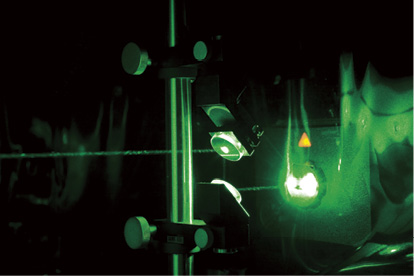
Professor Watanabe has extensive experience with laser-related research and development at numerous institutes, each characterized by a different standpoint and philosophy, ranging from corporate research centers to national laboratories. Having reflected on these experiences and his current position as a university professor, he believes the major goal of this laboratory should be to create new fields that create the potential for new technology lineages. Dr. Zhang, our research associate, brings considerable experience in fundamental studies of light at various research institutes, both in his home country and abroad. Dr. Zhang is eager to formulate new ideas and concepts that generate future optical technologies and to explore the potential applications of these technologies.It is our hope that our headwater technologies will win widespread recognition and lead to the development of novel monozukuri manufacturing, ultimately contributing to industry and to society. To achieve this goal, we are proceeding with in-depth investigations in each of our current research fields, seeking to transform current technologies into novel and fundamental technologies for the future.
It goes without saying that these new research fields have no value without widespread recognition. We strive to expand our opportunities to present our technologies to the widest possible audience in the hopes that such efforts will pave the way to future industry-university collaborations and to the creation of innovative ideas and technologies.

